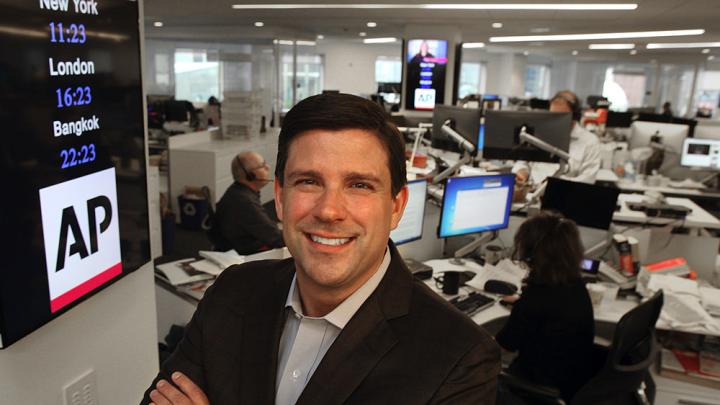Michael Fabiano, A.L.M. ’16, was never happy sticking to one field. After graduating from the Stevens Institute of Technology with a bachelor’s in mechanical engineering and working in Bell Labs, he felt the tug of technology and switched his focus in 1993 toward software development. A decade later, he shifted again—toward media.
It was there he felt most at home. “It was a great mix of technology, business, and creativity,” he says, “which were three things I like to blend into my career.” Though he worked on business development for NBC and NBC News, his collaborations with journalists made him curious about the ins-and-outs of the job: “I just wanted to learn more about what made them tick,” he says. His interest led him to the Harvard Extension School, where he graduated after three years of part-time coursework with a master’s in journalism. So enamored was he with the program that he is now president of the Harvard Extension Alumni Association.
Now, as vice president and general manager of Americas Media at the Associated Press, Fabiano helps out with the one of the biggest projects in journalism out there: calling the 2020 elections. As the votes come in this year, Fabiano will be among those helping to declare thousands of winners.
Some are expecting this election cycle to be particularly contentious, but Fabiano doesn’t believe the drama will have a big effect on the AP system. “You know, we’ve been doing this through the Civil War, through two World Wars, the Great Depression, and every conflict,” he says. “We have done it through all these conflicts and panics over the years, and it’s going to be the same process.”
The process is simple but requires a tremendous amount of legwork. First, thousands of AP stringers collect voting numbers from county clerks. They send the results to AP’s vote entry clerks, who enter the votes into AP’s online system, which is rigorously checked and verified for inaccuracies. The numbers are sent first to AP’s customers (including news organizations across the country) and then to the public. Analyzing vote tallies alongside a number of metrics—including results from past elections—AP’s vote callers declare the winners across thousands of elections when they determine one candidate has no path toward victory. In 2016, AP’s calls were 99.8 percent accurate.
Though much has changed since AP started calling elections in 1848, an amusing amount has not. The United States still lacks a federal body that counts votes on election night. Each state runs its own elections in whichever way it decides, and the counties and townships within each state count the votes. That means AP’s many stringers have to evaluate how to collect voting results at different locations before election night. Sometimes that means showing up at a voting site in person to collect a thumb drive with results. Other times it means checking a website or calling an election official. “It’s not brain surgery,” Fabiano says. “It’s a manual process all over the country that requires thousands of resources.”
Even though many people will be voting in new ways this year, Fabiano doesn’t expect a major shift in AP’s process. “We’re not necessarily worried about our ability to count the votes,” he says. “It’s just going to be more about whether the state is able to accurately tally up that vote and give it to us.” This election may feature more than half the country voting by mail, but Fabiano points out that many states have permitted mail-in ballots for a long time now, and that AP has been able to call elections regardless. The AP also had a chance to work with states that more recently adopted mail-in voting—like New York and Massachusetts—during the 2020 primary process.
Not all votes must be counted for a race to be called. If a candidate has an insurmountable lead, or if returns indicate that a candidate is well ahead of a traditional winning pace, a call can be made quickly with a high degree of accuracy. AP VoteCast, which surveys voters online, by phone, and by mail, adds context to help make a decision.
In some cases, these calls can take minutes. Others can take hours, or even days. Fabiano points out that the 1996 reelection of Bill Clinton was announced at 9 P.M. on Election Day, Donald Trump wasn’t declared president-elect until 2:29 a.m. the next morning. When the 2020 presidential race can be called will depend largely on the tightness of the results.
As Election Day approaches, Fabiano reports that the race-callers on his team are working seven days a week in preparation for the 2020 vote count. Thousands of others will be on hand election night to make sure the race is called as quickly and accurately as possible. “Everyone considers it a deep privilege to be part of the team that is working on this and getting it right, and representing exactly what the voters want,” he says. “It’s a privilege of my lifetime to be involved.”








